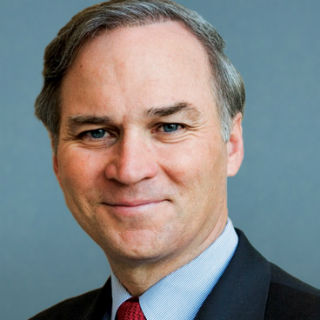
At the time, expected survival for childhood leukemia was a mere 8 weeks. It was any parent’s — or doctor’s — worst nightmare. Freireich would remember the horror of watching three, four, five year old children bleed to death in that hospital unit for the rest of his life. No one knew how to stop the bleeding. Chemotherapy was largely seen as a last-resort treatment. It felt like a death knell. Parents were often advised instead to just let their child pass away as comfortably as possible.
But where others saw a hopeless case, Dr. Freireich, with his characteristic stubbornness, was ready to put up a fight. His first task was to stop the horrific bleeding that was killing children before drug treatments even had a chance. After close study, Freirich became convinced the problem was insufficient platelets, the tiny discs that enable clotting. The idea contradicted conventional wisdom, but when Freireich mixed platelets from his own blood with blood taken from a leukemic patient, he was proved right.
Now, he had time to start tinkering with a new approach to treating leukemia. Until that point, cancer was treated with a single drug. If one drug didn’t work, you moved onto the next. Instead of searching for a cancer super drug, if you will, Dr. Freireich thought outside the box. Instead of asking, “How can I discover the new cure-all drug?” he flipped the question. He asked, “What can we do with what we have? How can we think differently about the options in front of us?” Dr. Freireich wondered if combining several chemotherapy treatments simultaneously would increase the success rate of remissions. Over the course of several trials, Dr. Freireich, along with a colleague, discovered a multi-drug treatment for leukemia. Their discovery led to cures that today saves the lives of 75 percent of children with this cancer, as well as to more effective treatments for other cancers.
Today, chemotherapy is a viable option for many cancer patients. Dr. Freireich changed the course of history for cancer treatment. And he did it by challenging the status quo, thinking outside-the-box, and not being afraid to innovate.
I’ve written quite a bit about medical discovery and its importance to our nation’s future, both in terms of our health and well-being, and global competitiveness. As a country, our healthcare system needs to focus on not only treating the diseases that impact so many Americans, but also on curing and preventing them. The federal government should be prioritizing innovation, not creating red tape. It should be incentivizing discovery, not creating barriers to research. It should be rewarding – not discouraging – thinking outside-the-box and bucking the status quo. That’s why I’ve introduced and cosponsored legislation encouraging this kind of innovation in medical research:
The Patients First Act doesn’t ask us to continue things as they are when it comes to stem cell research. Instead of putting the federal government’s effort into getting people to come to an agreement over embryonic stem cell research, it flips the question. It asks us to think differently about medical stem cell research. Adult stem cell research is an area where we see some agreement; adult stem cells are non-embryonic and noncontroversial, taken from a live human being through umbilical cord blood, bone marrow, and other tissues, and used to regenerate and repair tissues and organs. This bill, which I introduced, prioritizes funding stem cell research that has the most promise for curing and treating patients. It provides scientists and researchers and physicians an opportunity to think differently.
The Childhood Cancer Survivorship, Treatment, Access, and Research (STAR) Act, which I’ve cosponsored, doesn’t only expand opportunities for childhood cancer research, it also improves efforts to identify and track childhood cancer incidences into a national childhood cancer registry. Even after beating childhood cancer, many survivors suffer from late effects of their disease or treatment, including secondary cancers and organ damage. This bill asks the question, “How can we improve quality of life for children who survive cancer?” and establishes a new pilot program to begin to explore innovative models of care for childhood cancer survivors.
Additionally, I’ve co-lead bills such as the Independent Innovator and Repurposing Act, to encourage the development of new medical treatments, by repurposing existing drugs to address diseases including cancer, Parkinson’s disease, Alzheimer’s disease, epilepsy, depression, sleep disorders, and Post-Traumatic Stress. Encouraging drug repurposing is a critical avenue for discovering ground-breaking ways to combat – and ultimately cure – these devastating diseases.
Policies such as these, combined with the brightest minds of our scientists and researchers, allow us to think even bigger about the immense possibilities that lie ahead for health and wellness of people everywhere. Dr. Emil Freireich trail-blazed ways to a breakthrough cure. I know we can do the same again today.
Randy Forbes represents the Fourth District of Virginia in Congress.










